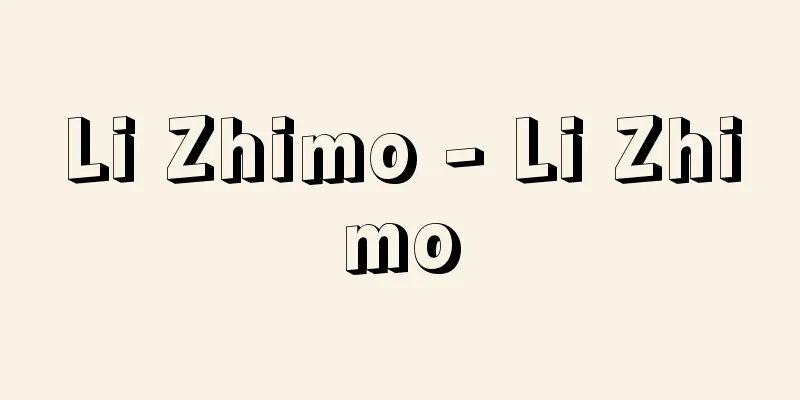Fine wood - Meiboku

|
It is a rare and expensive timber with unusual shape, color, grain, and quality, and a special charm. It is used as a design of Japanese architecture in teahouses, Sukiya-style buildings, and around the tokonoma alcoves of Japanese-style houses. Natural logs and bark pillars, as well as sawn timber with plank and straight grain, or special grains composed of annual rings and pith lines are preferred. Fine wood can be broadly divided into three types: natural wood, semi-natural wood, and processed fine wood. [Jin Nakamura] Natural woodThe trees are used as they are, without any changes to their appearance, and the bark is polished and the logs are used to appreciate their natural beauty. Typical examples include red pine, cherry blossom, camellia, Chinese quince, and magnolia. [Jin Nakamura] Semi-natural woodThere are logs that have had their bark peeled off and are used as polished logs, and logs that have had their rough bark removed and are then rusted, called atesabi logs and sabi logs. Polished logs include Kitayamasugi (Kitayama cedar), Yoshinosugi (Yoshino cedar), muro (juniper), and chinquapin, and among them, natural ayasugi logs are considered to be the highest quality. Atesabi logs are made by peeling the bark off felled ate (asunaro) logs and leaving them in the mountains for several days to allow black mold to seep into the bark. Sabi logs are made by rusting plain cypress logs using the same method. [Jin Nakamura] Processed precious woodThese are squared timber, shaved logs, and planks made from wood that has been processed using cutting techniques, and representative examples include cypress, cedar, red pine, pitch pine, zelkova, camphor, mulberry, and paulownia. In recent years, due to resource depletion and advances in plywood technology, the ratio of processed products, known as artificial products, to natural products has been increasing. [Jin Nakamura] "Compilation of Sukiya Architecture: A Collection of Fine Woods" edited by Masao Nakamura (1985, Shogakukan) Source: Shogakukan Encyclopedia Nipponica About Encyclopedia Nipponica Information | Legend |
|
形状、色沢、木理、材質が珍奇で、特殊な風趣をもつ高価で希少価値のある用材のこと。茶室や数寄屋(すきや)建築、和風住宅の床の間まわりで、和風建築のデザインとして用いられる。自然のままの丸太や面皮(めんかわ)柱をはじめ、製材した木材の板目や柾(まさ)目、あるいは年輪や髄線から構成される特殊な木目(もくめ)が好まれる。 銘木は大きく、自然木、準自然木、加工銘木の3種類に分けられる。 [中村 仁] 自然木まったく外見を変えず、立樹の姿そのままで用いられるもので、樹皮を磨き、皮付き丸太としてその自然美を賞味する。代表的なものに、アカマツ、サクラ、ツバキ、カリン、コブシなどがある。 [中村 仁] 準自然木樹皮をはいで磨き丸太として用いるものや、荒皮をはぎ錆(さび)付けを施す檔錆(あてさび)丸太、錆丸太がある。磨き丸太としては、キタヤマスギ(北山杉)、ヨシノスギ(吉野杉)、ムロ(ネズ)、シイなどがあり、なかでも天然の綾(あや)(アヤスギ)丸太は最高級のものとされる。檔錆丸太は、伐採したあて(アスナロ)丸太の荒皮をはぎ、山中に数日放置し、樹肌にクロカビを染み付かせる。錆丸太は、ヒノキの素丸太を同様の手法で錆付けしたものである。 [中村 仁] 加工銘木加工技術によってつくられる心去材の角材や削り丸太、板材で、ヒノキ、スギ、アカマツ、ヤニマツ、ケヤキ、クスノキ、クワ、キリなどが代表的である。 近年は、資源の枯渇と合板技術の発達により、天然物に対して人工物といわれる加工品の比率が高くなってきている。 [中村 仁] 『中村昌生編『数寄屋建築集成 銘木集』(1985・小学館)』 出典 小学館 日本大百科全書(ニッポニカ)日本大百科全書(ニッポニカ)について 情報 | 凡例 |
Recommend
development of underdevelopment
...(2) This "center-satellite polarization&q...
Whalebird
...includes the northern fulmar (illustration), t...
Nechaev, Sergei Gennadievich
Born: October 2, 1847 in Ivanovo Died December 3, ...
Ceratopogonidae
…General term for insects of the Ceratopogonidae ...
Climate factors - climate indicators
Climate factors affecting the climate of each regi...
Anhinga - American Anhinga
... The common anhinga is found in tropical Afric...
The Ganzheitstheorie
… On the other hand, the currently influential th...
He Guiqing
…This led to the establishment of the Customs Adm...
"Ohara Entry" - Ohara Entry
…Above the Kanjo scroll, there are two small secr...
On-kana spelling - Jionkana
This shows how to use kana to write the on-the-sp...
Sanjo family
The Fujiwara Northern House Kan'in line. Its f...
Défense (English spelling)
This is the central area of the new urban develo...
Annals of the Yi Dynasty
A Korean history book. Currently known as the Anna...
Shareholder limited liability system
...Thirdly, the criteria for a business suitable ...
Inspection - Kemi
It is also written as kemi, and kenmi can also be ...









